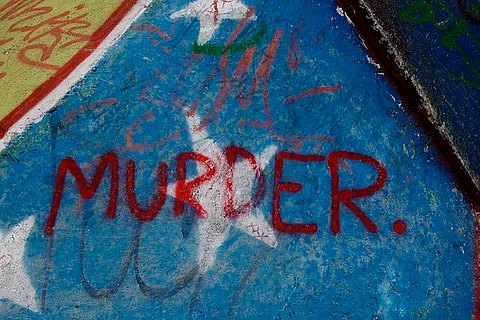

Haritha John | The News Minute | January 7, 2015 | 6.58 pm IST
A Public Interest Litigation (PIL) has been filed in the Bombay High Court asking the court to to constitute a Special Investigating Team to probe mysterious deaths in India’s nuclear establishment over a four year period between 2010 and 2014.
The PIL has been filed based in data compiled under the Right To Information Act by activist Chetan Kothari reports Rediff.
"The data compiled by my client using the RTI Act clearly shows that the reasons for many deaths cited by the various respondents have been categorised as 'unexplained'." Lawyer Ashish Mehta, the advocate for the petitioner told Rediff.
The death of Homi Jhangir Bhabha, Indian nuclear physicist, in 1966 is regarded a mystery by many. Dr. Bhabha had died in an air crash after he publicly said India could produce a nuclear device in a short time. The crash had reportedly taken place in the Swiss Alps near Mt.Blanc and no debris was ever found.
Homi Bhabha’s death and theories around it surely borders on being just conspiracy theories, but there have been deaths in India’s nuclear and atomic energy sector department which are worrying. Between 2009 and 2013 at least 10 employees in department of atomic energy (DAE) lost their lives in murders and mysterious fires.
On June 8, 2009, L. Mahalingam, a 47-year-old senior scientific officer at the Kaiga Atomic Power Station in Karwar, Karnataka, went on a morning walk and never returned. Five days later, his decomposed body was found from the Kali River. As per reports, though police confirmed it as suicide his family refused to believe the police’s theory.
Two young researchers, Umang Singh and Partha Pratim Bag, were burnt to death in a mysterious fire in the modular lab of the Bhabha Atomic Research Centre’s (BARC) radiation and photochemistry department on December 30th 2009. Reports say that there was nothing inflammable in the lab, which deepened the mystery. To this day, neither Umang’s family nor Partha’s family know the exact cause of the fire.
The PIL mentions these two deaths and says, “'In any other country, the murder of two Engineers connected to a crucial strategic programme would have created a media storm. But it's rather shocking why such a thing is not happening here. However, the deaths of the two were passed off both by the media as well as by the ministry of defence as a routine accident, with only the ordinary police officer tasked with investigations into the cause of death. The inquiries went nowhere.'
In a clear case of murder, Mahadevan Padmanabhan Iyer, a mechanical engineer at Baba Atomic Research Centre reaction group, was found dead in his house in south Mumbai in February 2010. Reports say that except some blood stain, his house was undisturbed. The murder was unsolved.
Mohammad Mustafa, 24, a scientist at the Indira Gandhi Centre for Atomic Research, Kalpakkam (IGCAR) was found dead in his quarters at Kalpakkam with his wrists slashed in 2012. According to an IANS report, police officer who investigated this case had confirmed that though they had recovered a death note written by Mustafa, they didn’t find any reason for a suicide.
The deaths of Nuclear Power Corporation employee Ravi Mule and scientist Uma Rao also remain mysterious.
As latest in this long list, KK Joshi and Abhish Shivam, engineers on indigenous nuclear-powered submarine INS Arihant, were found dead on railway tracks in Visakhapatnam in October 2013.
Though police maintain they found no suspicious marks on the bodies, reports say the men were not crushed by a train. This resulted in their families alleging that that they could have been killed elsewhere before being placed on the railway tracks to make the deaths look like a suicide.
The deaths were later dismissed as a routine death.
Sushmitha a research scholar who had done a study on this issue as a part of her academic research told The News Minute, “You won’t get any data on this issue and officers in the concerned departments are not comfortable to speak about it. They hide something and it is very difficult to find the family details of the victims. My research on it is incomplete. Nobody dared to talk about it.”
Dr. A Gopalakrishnan, former chairman of Atomic Energy Regulatory Board was irked by the questions on the mysterious deaths. “There are many people working in this field, some may die, it is quite natural. I don’t know anything more about it,” he said to The News Minute.
As the PIL notes, “'The most pressing issue isn't who might be behind the murders, but that the Indian government's apathy is potentially putting their high-value staff at even greater risk.”